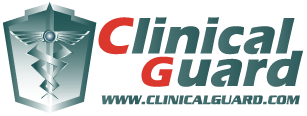The Brief History of the Pulse Oximetry
1850's Russian physiologist I.M. Sechenov developed a vacuum blood pump which was laterly used for research purpose. [8]
1864 Sir George Gabriel Stokes, 1st Baronet, an Irish physicist and mathematician, discovered the respiratory function of haemoglobin. [1,2]
1876 Karl von Vierordt, a German physician who developed techniques and tools for the monitoring of blood circulation, used a light source to distinguish fully saturated blood from that which is not. [1,3]
1898 English physiologist Halden brought forward the principle of chemical expulsion of oxygen from its complexes with haemoglobin. J.Barcoft used this principle for the examination of gas composition of blood. [8]
1900R. Vierordt demonstrated that application of Hufner tourniquet caused a decrease in the intensity of red light passed through a human hand.
1922 American biochemist D. van Slyke combined the vacuum and chemical principles of gas expulsion from blood and used them in his manometric appratus.[8]
1932 German physiologist L. Nicolai optically recorded the in vivo oxygen consumption of a hand after circulatory occlusion in Gottingen, Germany. [5]
1935 The first device developed by Carl Matthes to noninvasively measure oxygen saturation in human blood by transilluminating it with coloured light,which employed an ear probe. [1,2,5]
1939 K.Matthews and F. Gross used photometry in examination of the ear auricle. Two-wavelength spectrophotometry was used to avoid the absorption of light by surrounding tissues.
1940's The development of pulese oximeter intensified due to the need of pilots flying at high altitudes in lack pressurized cabins during WW II. This technique saved pilots in the war.[3,5]
1941 Oximetry testing is first used to identify the process of obtaining saturation readings with an pulse oximeter. [1]
1942 E.Goldie used compression of earlobe to obtain "bloodless" reference. [7,8]
1942 G. Millikan and H. Sarre used local heating to arterialize capillary blood.[1,8]
1942 Light reflection oximetry was developed.
1970 Oximetry becomes clinically feasible, after scientists at Hewlett-Packard developed commercial ear oximeter that preferentially measured arterial saturation by heating the tissue to 41 Celcius degree to increase local cutaneous blood flow. [1,4]
1974 Takuo Aoyagi found that arterial oxygen saturation could be measured by quantifying pulsations in the light signals coming through tissue, which made heating the tissue unnecessary. This device was the ancester of most modern pulse oximeters. [4]
1978 William New, MD, PhD invented the prototype for modern pulse oximetry.[6]
1980s Oximeters became smaller in size, easier to apply, and less expensive. [1]
1995 Fingertip oximeters, which are small enough to put a finger in, first appeared on the market. [1]
2000 U.S.A. Medicare accepts physicians' billing for in-office oximeter readings. [1]
References:
[1] Portable Oxygen: A User's Perspective, Viewed May 2007
[2] George Gabriel Strokes, Viewed May 2007
[3] Karl von Vierordt, Viewed May 2007
[4] Pulse oximetry, C Crawford Mechem, MD, FACEP, Viewed May 2007
[5] History of blood gas analysis. VI. Oximetry, Severinghaus JW; Astrup PB, J Clin Monit 1986 Oct;2(4):270-88.
[6] Saving Lives One Breath At A Time, Viewed May 2007
[7] Medical Electronics Lecture, Neil Townsend, Viewed May 2007
[8] The history of oximetry, B.D.Zislin and A.V.Chistyakov, Biomedical Engineering, Vol. 40, No. 1, 2006, pp. 53-56. Translated from Meditsinskaya Tekhnika, Vol. 40, No. 1, 2006, pp. 44-47.

